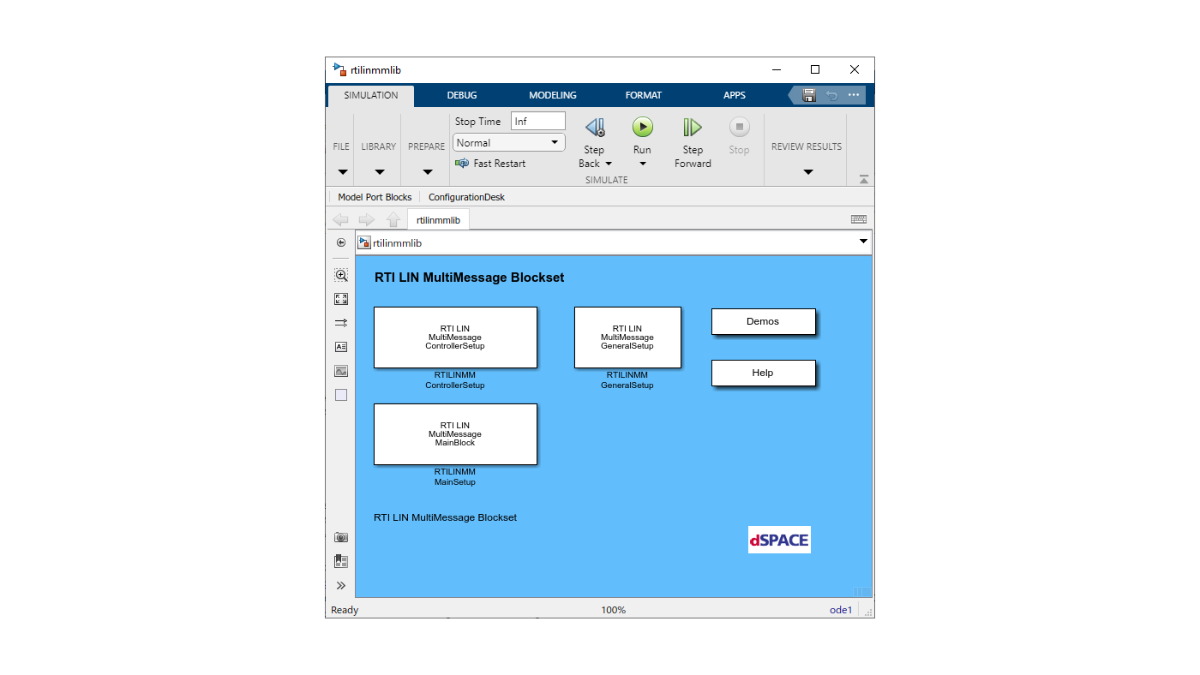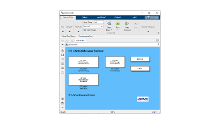RTI LIN MultiMessage Blockset
For combining dSPACE systems with LIN communication networks
The RTI LIN MultiMessage Blockset is an extension for Real-Time Interface and can be used for combining dSPACE systems with LIN communication networks and for configuring these LIN networks.
- Convenient configuration of LIN setups for rapid control prototyping and hardware-in-the-loop simulation
- Database file import (LDF, DBC, FIBEX, AUTOSAR)
- LIN raw data access
Application Areas
The RTI LIN MultiMessage Blockset is an extension for Real-Time Interface (RTI) and can be used for combining dSPACE systems with LIN communication networks and for configuring these LIN networks. It is fully integrated with Simulink® and supports various dSPACE products, such as SCALEXIO1) and MicroAutoBox II.
Key Benefits
The strong point of the RTI LIN MultiMessage Blockset is handling complex LIN setups, allowing you to control and configure all unconditional and event-triggered LIN frames from one single Simulink® block (configuration via database file). LIN configurations can easily be read in from communication matrix description files such as LDF, DBC, FIBEX, and ARXML.
You can buy the product for SCALEXIO platforms up to and including May 15, 2023. New releases (versions) of the RTI LIN MultiMessage Blockset will be available for customers with a Software Maintenance Service Contract until November 15, 2024. The dSPACE Release 2024-B will be the last version supporting the combination of this blockset and SCALEXIO.
The use cases covered by the RTI LIN MultiMessage Blockset are already supported by the successor product Bus Manager, which offers several advantages. Migration support information and tools are available on our website (e.g., migration scripts).
| Functionality | Description |
|---|---|
| General |
|
| Signal initialization/configuration |
|
| Node configuration |
|
| Frames |
|
| Bus events |
|
| LIN slave tasks |
|
| LIN master tasks |
|
| Further manipulation options |
|
| Handling characteristics |
|
- Ventes Notre équipe d’ingénieurs d’affaires vous assistera dans le choix de votre système dSPACE. Ils vous fourniront également les tarifs et toutes les informations souhaitées concernant d’autres produits dSPACE.
- Achat de logiciels dSPACE Informations sur le téléchargement, l’installation et le système de licence des logiciels dSPACE
Faire avancer l'innovation. Toujours à la pointe de l'évolution technologique.
S’abonner à nos newsletters, gérer ses abonnements ou se désabonner. La newsletter mensuelle contenant toutes les informations liées à l’aéronautique et défense.


